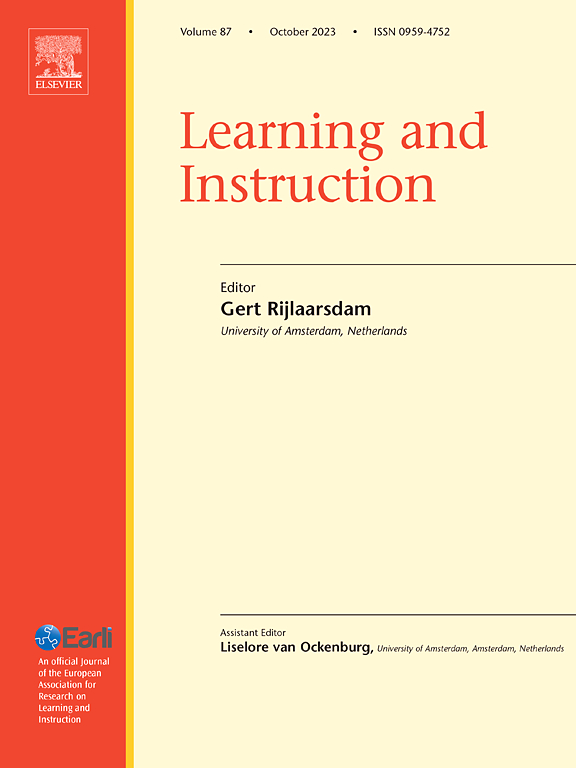Agile learning to boost Java skills in novice learners
IF 4.9
1区 教育学
Q1 EDUCATION & EDUCATIONAL RESEARCH
引用次数: 0
Abstract
Context
Teaching Java programming to beginners in blended digital and classroom learning settings presents challenges in fostering skill progression and maintaining engagement. Regular learning methods often fail to support the sequential development of computational thinking and programming proficiency.
Objective
This study introduces an agile learning strategy aimed at improving Java programming skills in beginners. The strategy emphasizes step-by-step learning of core concepts through visual programming games and repetitive practice to enhance both engagement and skill development.
Method
The agile learning strategy was applied in a blended learning environment, incorporating interactive programming tools, continuous feedback, and repetition. A comparative analysis was conducted between two groups: one using the agile strategy and another following regular learning methods. Improvements in computational thinking and Java programming skills were assessed.
Results
Learners using the agile strategy showed significant improvements in both computational thinking and Java programming skills, outperforming those in the regular learning group. However, variations in individual performance suggest that learner-specific factors may affect outcomes.
敏捷学习提高新手的Java技能
在混合数字和课堂学习环境中向初学者教授Java编程,在培养技能进步和保持参与度方面提出了挑战。常规的学习方法往往不能支持计算思维和编程能力的顺序发展。本研究介绍了一种敏捷学习策略,旨在提高初学者的Java编程技能。该策略强调通过视觉编程游戏和重复练习逐步学习核心概念,以提高参与度和技能发展。方法将敏捷学习策略应用于混合学习环境中,结合交互式编程工具、持续反馈和重复。对比分析两组:一组采用敏捷学习策略,另一组采用常规学习方法。评估了计算思维和Java编程技能的改善。结果:使用敏捷策略的学习者在计算思维和Java编程技能方面都有了显著的提高,优于常规学习组的学习者。然而,个体表现的差异表明,学习者的特定因素可能会影响结果。
本文章由计算机程序翻译,如有差异,请以英文原文为准。
求助全文
约1分钟内获得全文
求助全文
来源期刊

Learning and Instruction
Multiple-
CiteScore
11.30
自引率
4.80%
发文量
109
期刊介绍:
As an international, multi-disciplinary, peer-refereed journal, Learning and Instruction provides a platform for the publication of the most advanced scientific research in the areas of learning, development, instruction and teaching. The journal welcomes original empirical investigations. The papers may represent a variety of theoretical perspectives and different methodological approaches. They may refer to any age level, from infants to adults and to a diversity of learning and instructional settings, from laboratory experiments to field studies. The major criteria in the review and the selection process concern the significance of the contribution to the area of learning and instruction, and the rigor of the study.
 求助内容:
求助内容: 应助结果提醒方式:
应助结果提醒方式:


